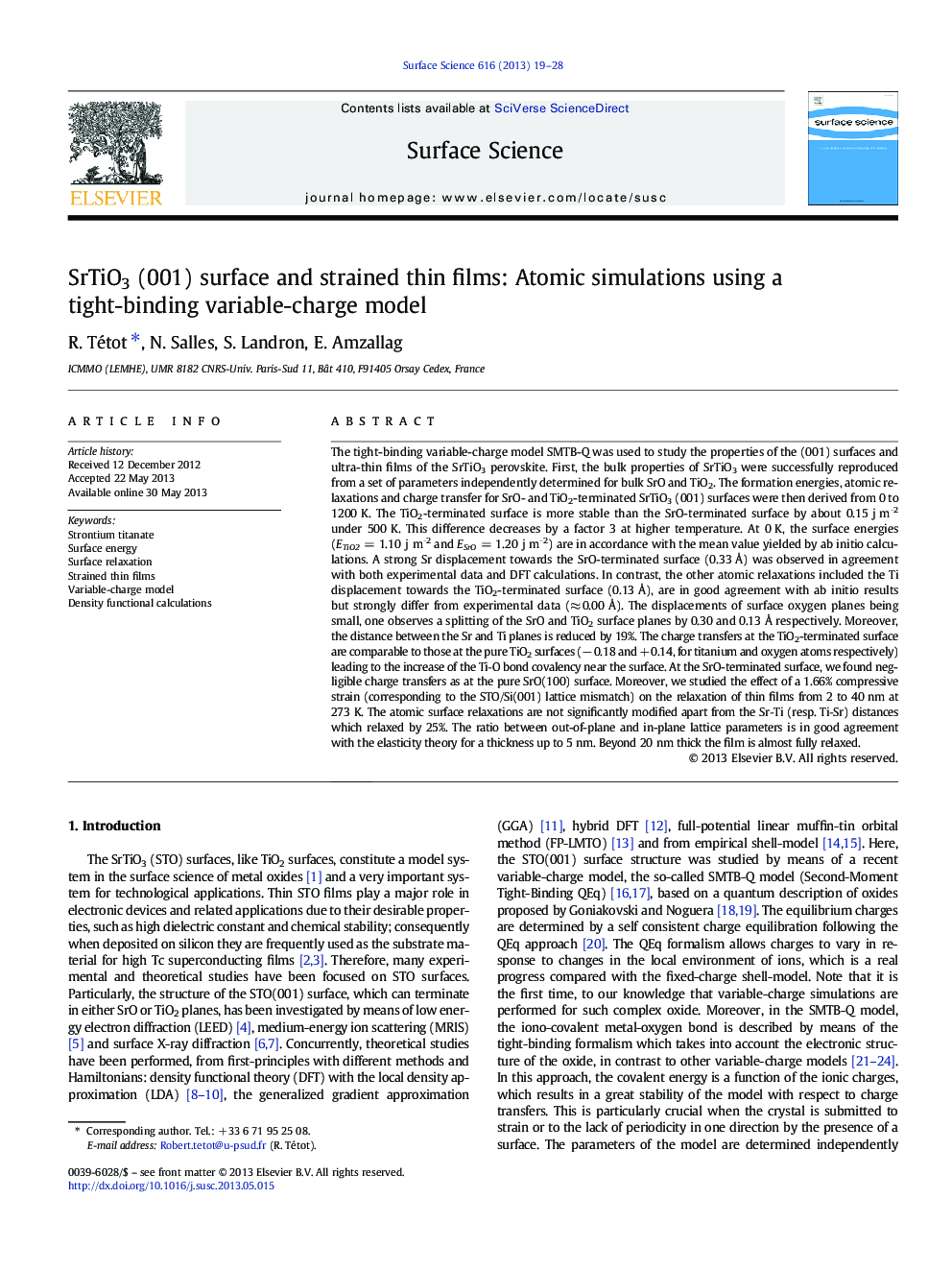| Article ID | Journal | Published Year | Pages | File Type |
|---|---|---|---|---|
| 5422281 | Surface Science | 2013 | 10 Pages |
Abstract
The tight-binding variable-charge model SMTB-Q was used to study the properties of the (001) surfaces and ultra-thin films of the SrTiO3 perovskite. First, the bulk properties of SrTiO3 were successfully reproduced from a set of parameters independently determined for bulk SrO and TiO2. The formation energies, atomic relaxations and charge transfer for SrO- and TiO2-terminated SrTiO3 (001) surfaces were then derived from 0 to 1200 K. The TiO2-terminated surface is more stable than the SrO-terminated surface by about 0.15 j mâ2 under 500 K. This difference decreases by a factor 3 at higher temperature. At 0 K, the surface energies (ETiO2 = 1.10 j mâ2 and ESrO = 1.20 j mâ2) are in accordance with the mean value yielded by ab initio calculations. A strong Sr displacement towards the SrO-terminated surface (0.33 Ã
) was observed in agreement with both experimental data and DFT calculations. In contrast, the other atomic relaxations included the Ti displacement towards the TiO2-terminated surface (0.13Â Ã
), are in good agreement with ab initio results but strongly differ from experimental data (â 0.00 Ã
). The displacements of surface oxygen planes being small, one observes a splitting of the SrO and TiO2 surface planes by 0.30 and 0.13Â Ã
respectively. Moreover, the distance between the Sr and Ti planes is reduced by 19%. The charge transfers at the TiO2-terminated surface are comparable to those at the pure TiO2 surfaces (â 0.18 and + 0.14, for titanium and oxygen atoms respectively) leading to the increase of the TiâO bond covalency near the surface. At the SrO-terminated surface, we found negligible charge transfers as at the pure SrO(100) surface. Moreover, we studied the effect of a 1.66% compressive strain (corresponding to the STO/Si(001) lattice mismatch) on the relaxation of thin films from 2 to 40 nm at 273 K. The atomic surface relaxations are not significantly modified apart from the SrâTi (resp. TiâSr) distances which relaxed by 25%. The ratio between out-of-plane and in-plane lattice parameters is in good agreement with the elasticity theory for a thickness up to 5 nm. Beyond 20 nm thick the film is almost fully relaxed.
Related Topics
Physical Sciences and Engineering
Chemistry
Physical and Theoretical Chemistry
Authors
R. Tétot, N. Salles, S. Landron, E. Amzallag,
